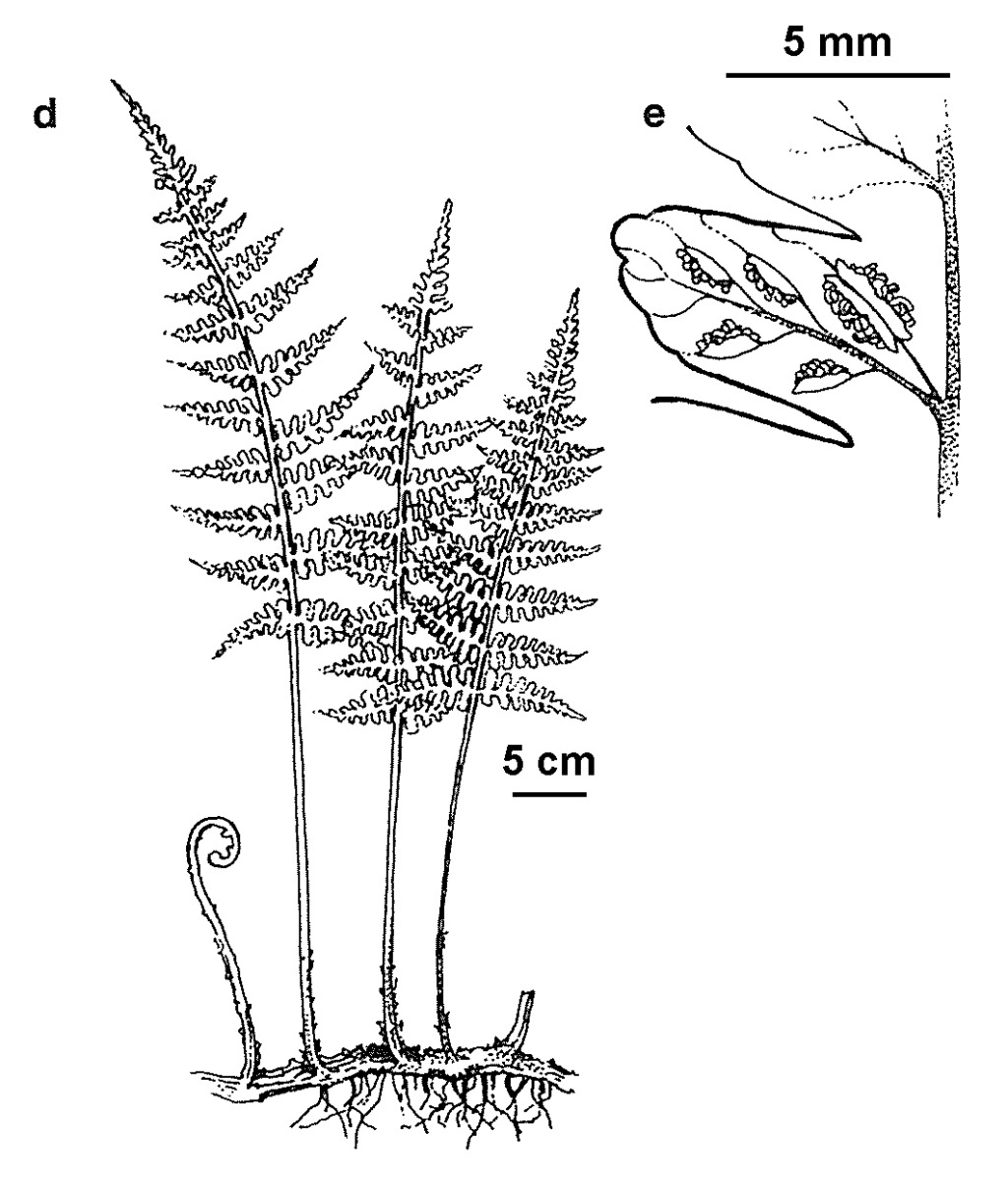Deparia petersenii subsp. congrua
(Brack.) M.Kato Lady FernRhizome creeping, covered in scales. Fronds relatively close together, erect, 30–80 cm tall. Stipe about equal in length to lamina, fleshy when young, dark green to brown, flattened on upper surface, grooved; scales narrow, pale brown, numerous near base, scattered above; hairs sometimes present. Lamina 1–2-pinnate, oblong to narrowly triangular, mid-green to dark green, with short, soft hairs on upper surface of rachis, veins and veinlets; rachis groove not continuous with groove of lamina midrib. Primary pinnae shortly stalked or sessile, lobed to pinnate; lobes broadly oblong to deltoid, margins crenate to shallowly toothed, apices blunt; veins simple or forked. Sori obliquely angled to mid-vein, linear-oblong, basal sori sometimes paired; indusium membranous, more or less flat (not inflated or arched), opening to leave toothed or irregularly torn margin.
GipP, EGL, EGU, HNF, Strz, HFE. Also Qld, NSW, Norfolk Is. New Zealand, found throughout the Asian and Indian region and on many Pacific islands (naturalised in the Americas). Rare in Victoria. In Victoria, known from Wabonga Plateau State Park, Traralgon South, a few sites from Buchan eastwards, and very recently found near Frankston and Langwarrin. Occurring in wet, shaded forests, riparian flats or on damp rock faces.
Kato (1984) recognizes 3 subspecies and 2 varieties of Deparia petersenii. Deparia petersenii subsp. congrua is distinguished from the other two subspecies by the thicker rhizome and stipe, the comparatively close-set, soft fronds, the more or less oblique pinna-segments, and the gradually narrowed, narrowly triangular, long-acuminate leaf apex.
Entwisle, T.J. (1994). Ferns and allied plants (Psilophyta, Lycopodiophyta, Polypodiophyta). In: Walsh, N.G.; Entwisle, T.J., Flora of Victoria Vol. 2, Ferns and Allied Plants, Conifers and Monocotyledons, pp. 13–111. Inkata Press, Melbourne.
 Spinning
Spinning


